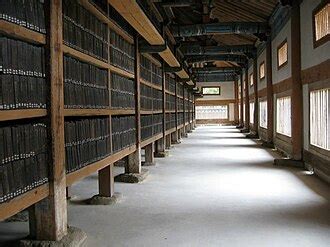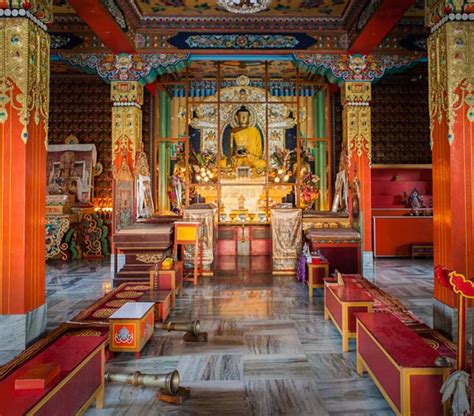buddhism in recently excavated texts in china BUDDHIST ARCHAEOLOGY IN REPUBLICAN CHINA 193 copies called attention to elaborate Buddhist narrative; vignettes executed with excitement and spontaneity; donor portraits of Silk . Mini digger hire is offered to Brighton by MD Digger Hire Sussex. Our mini diggers range is great for smaller buildings and landscaping projects where access is limited in Brighton. It is very economical and convenient to utilise one of our Mini Diggers.
0 · The Chinese Buddhist Canon and Other Buddhist Texts
1 · Sacred Resurgence: Revitalizing Buddhist Temples in Modern
2 · Highland Inscriptions in Buddhist China
3 · Buddhism in China: Past, Present and Future
4 · Buddhism in China: Collected Papers of Erik
5 · Archaeologists in China Unearth Sutra Translation by Tang
6 · Archaeologists in China Recover Over 1,500 Buddhist Artifacts
7 · (Re
8 · (PDF) Recovering Buddhism in Modern China, edited by Jan
9 · (PDF) Buddhist Archaeology in Republican China: a New
Find various ihi mini excavator bucket models and sizes on eBay. Compare prices, conditions, shipping options and ratings from different sellers and brands.

The Chinese Buddhist Canon and Other Buddhist Texts
The next three chapters examine aspects of Buddhism under Mao; one learns of the discovery and peregrinations of a skull relic of Xuanzang, efforts to formulate a Buddhism . Archeologists working at an excavation at the Tuyugou Grottoes in Xinjiang Uyghur Autonomous Region, northwest China, have announced the discovery of a large .An image of Tangut civilization thereby created is detached from historical reality as it emerges from the excavated texts, which reveal an overwhelming domination of Buddhist materials over .BUDDHIST ARCHAEOLOGY IN REPUBLICAN CHINA 193 copies called attention to elaborate Buddhist narrative; vignettes executed with excitement and spontaneity; donor portraits of Silk .
Archaeologists have spent several months excavating the site in downtown Chengdu, capital of China’s Sichuan Province, revealing the remains of Fugan Temple, a once .Sometimes steles are se-creted in caves or other hidden sites, usually with the goal of text preservation, such as the enormous Buddhist project at Fangshan 房山.2 In addition, there are .Buddhism in China is designed to be useful as well as comprehensive and aesthetically appealing. Not only is the collection thoroughly indexed, but the papers within it are now .
Buddhism in China faces a severe crisis, but it still has a solid foundation, built over 2,000 years. As long as we can identify the inheritance and recover the original inspiration, Chinese . In response to the state of Buddhist temple construction in China in the decades following the Taiping Rebellion, Professor Gregory Adam Scott, a specialist in modern .Subsequently, translation into Chinese created what is known as the Chinese Buddhist canon, which was and still is normative in Japan, Korea, and Vietnam, but other societies, especially .The next three chapters examine aspects of Buddhism under Mao; one learns of the discovery and peregrinations of a skull relic of Xuanzang, efforts to formulate a Buddhism compatible with Marxism, and an account of the devastation of temple Buddhism in Suzhou.
Archeologists working at an excavation at the Tuyugou Grottoes in Xinjiang Uyghur Autonomous Region, northwest China, have announced the discovery of a large fragment of ancient text believed to be a copy of the Mahaprajnaparamita Sutra, translated into Chinese by the renowned Tang dynasty (618–907) Buddhist monk, scholar, and traveler Xuanzang.An image of Tangut civilization thereby created is detached from historical reality as it emerges from the excavated texts, which reveal an overwhelming domination of Buddhist materials over the so called "secular" texts.BUDDHIST ARCHAEOLOGY IN REPUBLICAN CHINA 193 copies called attention to elaborate Buddhist narrative; vignettes executed with excitement and spontaneity; donor portraits of Silk Road officials possessing great historical value; and complete icon installations preserved untouched since the Tang—these are just a few of the features that Zhang .
Archaeologists have spent several months excavating the site in downtown Chengdu, capital of China’s Sichuan Province, revealing the remains of Fugan Temple, a once famous Buddhist site that flourished from the Eastern Jin dynasty (317–420) to the Southern Song dynasty (1127–1279).Sometimes steles are se-creted in caves or other hidden sites, usually with the goal of text preservation, such as the enormous Buddhist project at Fangshan 房山.2 In addition, there are multi-sided Buddhist pillars that include a variety of writings on their surfaces, in-cluding “spells” (dhāraṇī texts) or scripture passages and historical records.
Buddhism in China is designed to be useful as well as comprehensive and aesthetically appealing. Not only is the collection thoroughly indexed, but the papers within it are now supplied with in-line Chinese characters where the originals had only glossaries or no characters at all.
Buddhism in China faces a severe crisis, but it still has a solid foundation, built over 2,000 years. As long as we can identify the inheritance and recover the original inspiration, Chinese Buddhism can certainly flourish anew and illuminate the human world. To be .

In response to the state of Buddhist temple construction in China in the decades following the Taiping Rebellion, Professor Gregory Adam Scott, a specialist in modern Chinese history, has compiled and analyzed an extensive collection of local gazetteers.
Subsequently, translation into Chinese created what is known as the Chinese Buddhist canon, which was and still is normative in Japan, Korea, and Vietnam, but other societies, especially Tibet and the Tangut empire, reacted differently by undertaking translations.The next three chapters examine aspects of Buddhism under Mao; one learns of the discovery and peregrinations of a skull relic of Xuanzang, efforts to formulate a Buddhism compatible with Marxism, and an account of the devastation of temple Buddhism in Suzhou. Archeologists working at an excavation at the Tuyugou Grottoes in Xinjiang Uyghur Autonomous Region, northwest China, have announced the discovery of a large fragment of ancient text believed to be a copy of the Mahaprajnaparamita Sutra, translated into Chinese by the renowned Tang dynasty (618–907) Buddhist monk, scholar, and traveler Xuanzang.An image of Tangut civilization thereby created is detached from historical reality as it emerges from the excavated texts, which reveal an overwhelming domination of Buddhist materials over the so called "secular" texts.
BUDDHIST ARCHAEOLOGY IN REPUBLICAN CHINA 193 copies called attention to elaborate Buddhist narrative; vignettes executed with excitement and spontaneity; donor portraits of Silk Road officials possessing great historical value; and complete icon installations preserved untouched since the Tang—these are just a few of the features that Zhang .
Sacred Resurgence: Revitalizing Buddhist Temples in Modern
Archaeologists have spent several months excavating the site in downtown Chengdu, capital of China’s Sichuan Province, revealing the remains of Fugan Temple, a once famous Buddhist site that flourished from the Eastern Jin dynasty (317–420) to the Southern Song dynasty (1127–1279).Sometimes steles are se-creted in caves or other hidden sites, usually with the goal of text preservation, such as the enormous Buddhist project at Fangshan 房山.2 In addition, there are multi-sided Buddhist pillars that include a variety of writings on their surfaces, in-cluding “spells” (dhāraṇī texts) or scripture passages and historical records.
Buddhism in China is designed to be useful as well as comprehensive and aesthetically appealing. Not only is the collection thoroughly indexed, but the papers within it are now supplied with in-line Chinese characters where the originals had only glossaries or no characters at all.Buddhism in China faces a severe crisis, but it still has a solid foundation, built over 2,000 years. As long as we can identify the inheritance and recover the original inspiration, Chinese Buddhism can certainly flourish anew and illuminate the human world. To be . In response to the state of Buddhist temple construction in China in the decades following the Taiping Rebellion, Professor Gregory Adam Scott, a specialist in modern Chinese history, has compiled and analyzed an extensive collection of local gazetteers.

cat track skid steer 299d xhp forestry package
With dig depths of up to 4.6 metres and an outreach of 7.3 metres, our range of mini diggers for hire in Doncaster will make excavation far easier, making them the perfect choice for construction sites, garden renovation projects, and much more.
buddhism in recently excavated texts in china|Archaeologists in China Recover Over 1,500 Buddhist Artifacts